Development and assistance for poverty reduction and food security
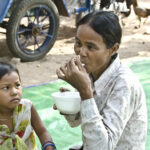
USAID’s Harvest program is helping Cambodia’s farmers. Photo by USAID, taken on 09 December 2013. Under the license CC BY-ND 2.0.The country has achieved remarkable sustainable growth, however, poverty and food security remain the challenges. The Royal Government of Cambodia (RGC) has acknowledged that to ...
Primary school
Cambodia’s education system is structured into a 6+3+3 formula -students spend their first 6 years in primary school (grades 1–6), followed by 3 years in secondary school (grades 7–9) and 3 years in high school (grades 10–12) before sitting the diploma examination.45 Cambodian students are ...
The first Environmental Impact Assessment (EIA) portal in Cambodia
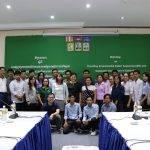
Cambodia aims to fasten its economic growth while fully committing to sustainable development. To avoid adverse impacts from the development and promote long term benefits to economic, social and environmental change, the practice of Environmental Impact Assessment (EIA) shall be enforced. And since EIA has ...
Health center budget
Access to information and open budgets is the first component of the Implementation Plan for the Social Accountability Framework (I-SAF).97 The other three components are citizen monitoring, facilitation and capacity building, and learning and monitoring.98 Three types of local services providers are at the focus: ...
SDG 18 Cambodia mine/ERW free
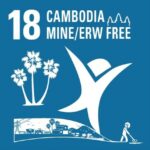
Cambodia has added an 18th goal to its localized version of the Sustainable Development Goals (SDGs) – “End the negative impact of mines/ERW and promote victim assistance”.131 The SDGs were adopted by all United Nations member states in 2015 as a universal call to action ...
Workshop on using open EIA reporting to drive accountable and transparent environmental governance in Cambodia
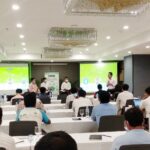
On 01 October 2020, Open Development Cambodia (ODC) hosted a half-day workshop on “Using Open EIA Reporting to Drive Accountable and Transparent Environmental Governance in Cambodia”. The event brought together 35 participants coming from various institutions, including local and international NGOs, grassroots organizations and media ...
Aid and development
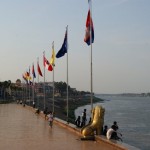
Following the Paris Peace Accords signed in October 1991, Cambodia has received a significant amount of global support for its development and post-conflict work. In 2014, 30 – 40 percent of the country’s national budget is funded through development assistance, placing Cambodia among the most ...
Labor policy and administration
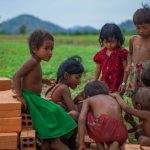
Children working with bricks, Cambodia. Photo by Sodanie Chea, take on 6 June 2013. Licensed under CC BY 2.0Cambodia has a total population of slightly over 15 million, most of whom are under the age of 30. An estimated 250,000 people enter the job market ...
Mitigation
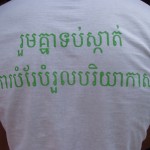
Together, fighting climate change. Photo by 350.org, taken on 12 October 2010. Licensed under CC BY-NC-SA 2.0.Clean Development MechanismThe Clean Development Mechanism (CDM), defined in Article 12 of the Kyoto Protocol, allows a country with an emission-reduction or emission-limitation commitment under the Kyoto Protocol to ...
Ministries and other national bodies
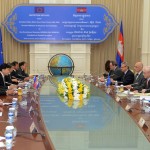
Nearly all of the ministries were established in 1995. A few ministries were only recently created in the post-2013 national election by a separation of one ministry into two. There are 28 government ministries and secretariats, and many national bodies. ...
Patient rights
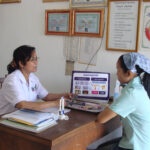
Access to quality healthcare is fundamental to enhancing citizens’ livelihoods and advancing towards more sustainable growth and development in countries all over the world. Along with increasing public demand for better health infrastructure and adequate access to healthcare services, many countries face the need to ...
Second Training Workshop on Strategic Environment Assessment (SEA)
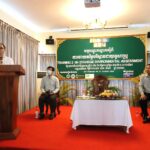
Following the success of the first edition in March 2020 in Phnom Penh, the 2nd Training Workshop on Strategic Environment Assessment (SEA) was conducted on August 26th and 27th in Battambang after being postponed due to the COVID-19 outbreak. ...
Non-renewable energy production
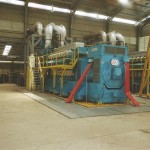
Non-renewable energy sources are chiefly fossil fuels such as coal, diesel, oil and gas. They provide most of Cambodia’s locally-produced electrical supply – in 2011 diesel and heavy fuel oil generators provided 89% of local electricity generation. ...
Administration
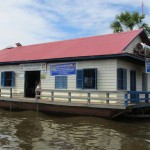
Cambodia’s sub-national administration consists of three tiers: capital city/province, municipality/district and sangkat/commune. Phnom Penh is the capital, and there are 24 provinces, 159 districts (including 26 municipalities and 12 khans), 1406 communes and 227 sangkats. ...
Small and Medium Enterprises (SMEs) information toolkit

RationalIn 2018, the total number of registered Small and Medium Enterprises (SMEs) was 155,745. More than 90 percent of registered firms in Cambodia are SMEs. However, despite being vital to the socio-economy, 95 percent are not registered yet. By 2025, 80% and 95% of small and ...
Forest protection

Deforestation has always been a problem in Cambodia since the 1970s, and it has aggravated inthe last decade. Some protected areas have been deforested. Between 2001 and 2018, Cambodia had lost 557,000 hectares (11.7%) of forest cover in protected areas.267 This loss has had an ...
Land transfers
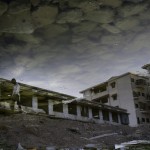
Land transfers in Cambodia assume a variety of forms involving both public and private entities. The right to transfer property to another and to be protected from forced transfer is essential to land tenure security. Land transfer capacity is a source of value for landowners, ...
Agricultural production
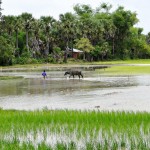
Rice field in Cambodia’s countryside. Photo by fmpgoh, taken on 15 July 2009. Licensed under CC BY-NC-ND 2.0The main products from the agriculture sector are rice, rubber, corn, vegetables, cashews and cassava. Unprocessed agricultural exports were projected to be more than 90 percent of total agricultural ...




